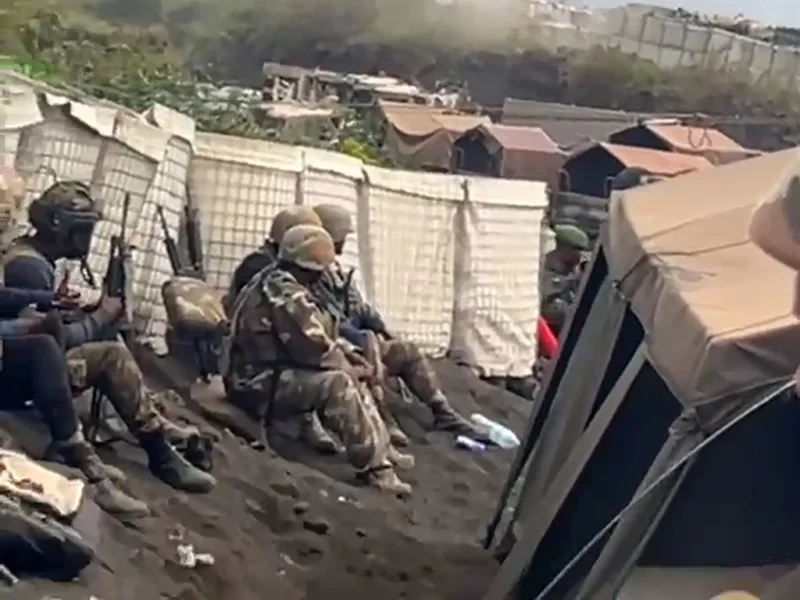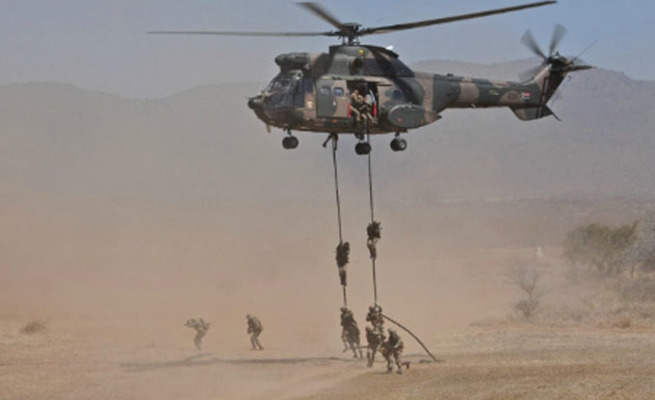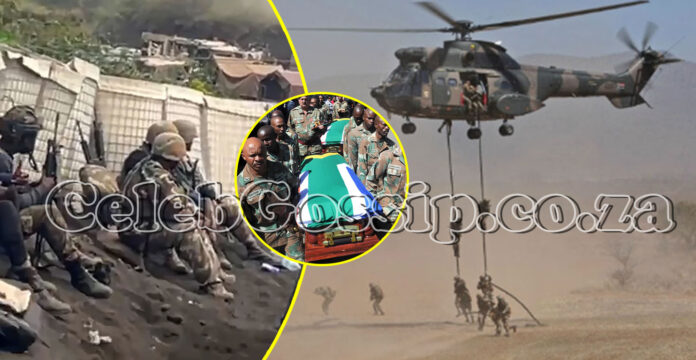South African National Defence Force (SANDF) personnel deployed in Goma, Democratic Republic of Congo (DRC), are reportedly surviving on just one meal a day, operating with outdated and unserviced helicopters, and facing severe communication challenges as they battle the well-equipped M23 rebel group. The dire conditions have raised serious concerns about the readiness and sustainability of the mission, which has already claimed the lives of 13 South African soldiers.

A senior SANDF official, speaking to IOL, revealed the grim realities faced by the troops. “The communications are essentially cut off; they do not have an internet network, but they do have power. At this stage, the fighting has stopped, and the Rwandan forces have taken over the Goma airport and are monitoring the situation,” the official said.
A Mission Under Strain
The SANDF deployment in the DRC is part of a broader regional effort to support the Congolese government in combating armed groups, particularly the M23 rebels, who are accused of committing widespread atrocities, including mass killings, rape, and attacks on civilians. The mission, authorised under the SADC Mutual Defence Pact, aims to restore peace and stability in the volatile eastern DRC.
However, the mission has been fraught with challenges. The M23 rebels, reportedly backed by Rwanda, are well-armed and have been accused of destabilising the region for years. The SANDF, despite its experience in peacekeeping operations, is struggling to match the rebels’ firepower and resources.
Outgunned and Outmanned
One of the most pressing issues is the SANDF’s reliance on outdated and poorly maintained equipment. The force’s Gripen fighter jets and Rooivalk attack helicopters, which are critical for providing air support, have not been serviced and lack spare parts. This has severely limited the troops’ ability to respond to threats effectively.

“The use of older equipment has also been less effective against the well-equipped M23,” the official noted.
Compounding the problem is the shortfall in troop numbers. The SAMIDRC was authorised to deploy 5,000 troops from South Africa, Malawi, and Tanzania. However, as of late January 2025, only about 1,300 troops have been deployed, leaving the mission severely understaffed.
Communication Cut-Off and Logistical Challenges
Logistical challenges further exacerbate the situation. The Goma airport, a critical hub for the mission, has been heavily vandalised. “The entire Goma airport building roof sheets have been vandalised or removed,” the official reported. Some aircraft have even been physically dismantled by looters.
Toilet facilities at the base have also become a problem, as the company responsible for servicing them has been unable to operate due to the ongoing conflict.
Tensions Between South Africa and Rwanda
The death of the 13 SANDF soldiers has heightened tensions between South Africa and Rwanda. Pretoria has accused Rwandan-backed M23 forces of being responsible for the killings, a claim that has been vehemently denied by Rwandan President Paul Kagame.
The diplomatic spat has further strained relations between the two nations, complicating efforts to resolve the conflict in the DRC.
Questions About the Mission’s Viability
The dire conditions faced by the SANDF troops have sparked fierce debate about the viability of the mission. Critics, including political parties and defence analysts, have questioned whether the soldiers are adequately trained, equipped, and supported for such a complex and dangerous operation.
Lindy Heinecken, a military expert who has spent decades researching South African peacekeeping operations, highlighted the challenges. “The combination of budget cuts, resource limitations, and the complex nature of the conflict raises questions about the South African National Defence Force’s ability to effectively achieve its objectives and ensure the safety of its personnel,” she said.
Heinecken also pointed out that the SANDF’s budget has been slashed to less than 1% of GDP, far below the global average of 2%. This has severely impacted the military’s ability to maintain equipment, conduct training exercises, and modernise its forces.











